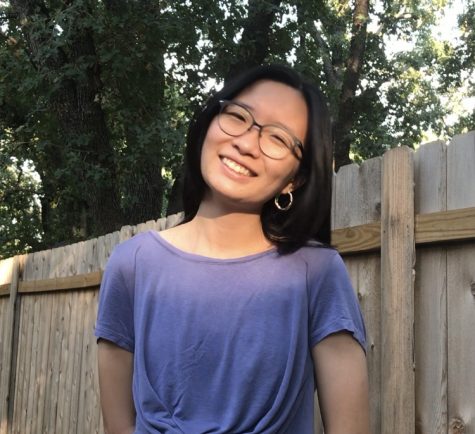Westwood Welcomes Students Back to Campus
September 26, 2020
Round Rock Independent School District (RRISD) campuses opened their doors for the beginning of in-person learning on Tuesday, Sept. 15, welcoming students back for the first time since late March. The district Department of Research and Evaluation reported that as of Sept. 1, only 18% of the Westwood student body opted to return to the classroom while the other 82% chose to participate in virtual learning.
For the first three weeks of the fall semester, all students learned virtually from home under phase one of a three phase approach, closely designed by district officials to facilitate a transition that prioritizes flexibility surrounding ever-evolving public health conditions and educational equity. Student and staff speakers were invited to provide feedback at a district board of trustees meeting held on Thursday, Sept. 17.
“We will continue to focus on the best decisions that experts, science and data suggest,” Superintendent Dr. Steve Flores said. “We don’t want to get this wrong. We’re not going to compromise on the safety of students or staff.”
Currently, high school students on campus will learn in the same way as their virtual peers. Educators provide virtual instruction for their respective course in addition to managing small cohorts of students within each classroom.
“A big thing that has helped me with adjusting as we go is realizing that I don’t have to have it all figured out to move forward. I just need to put one step in front of the other and take it day by day,” Science Department Chair and Chemistry teacher Mrs. Natalie Wieland said.
Designated entries and exits direct students straight to their respective classrooms, where hallway markers are placed to guide individuals on campus to help them maintain six feet of social distance. Classroom settings are arranged based on three factors, including the number of students in each room, the types of desks it contains, and its square footage. Enforcing such protocols and providing the necessary training to effectively implement them is a key part of the district’s plan.
“This is a cautious approach that allows us to serve students who, for a variety of reasons, need to be on campus, but to continue to focus on student and staff safety,” Dr. Flores said in a district news release.
While students continue to steer through the many new rituals and routines that come with this modified school year, many began to grow accustomed to engaging in practices that would help maintain both personal and community safety.
“It was less scary than I had imagined it to be,” an anonymous student said. “After seeing countless TikToks showing crowded hallways of other schools in the US, I was slightly scared that Westwood would be like that too. Luckily, there were very few students and we were all very respectful of each other and the teachers.”
Similar sentiments by students were echoed throughout, citing enhancement in social and emotional development as reasons for return. Many made their own preparations, bringing extra personal protective equipment as well as sanitization supplies for use throughout the day.
“I was actually very comfortable [with returning] mainly because two of my parents work in the school system and we talked about it. I wanted to go back for a sense of normalcy,” Isabelle Hunt ‘23 said.
As school systems around the country grapple with the challenges of navigating an unprecedented set of circumstances, reimagining learning has to come with some trials and tribulations along the way: all of which are being experimented with, ironed out, and confronted with an optimistic view towards the future.
“The district planned everything well and considered everyone’s situation,” the anonymous student said. “I appreciate the safety measures taken and am glad that they are strictly enforcing them. I’m incredibly grateful for all the teachers and staff that have returned to a populous campus despite the fact that we are in a pandemic.”
For members of the RRISD learning community, this experience serves as a learning curve for all to adapt to the new normal: a new normal that for roughly 50,000 students, is either behind a screen or masked, in a world of socially distanced classrooms, one-way hallways, and mediums for disinfection.


